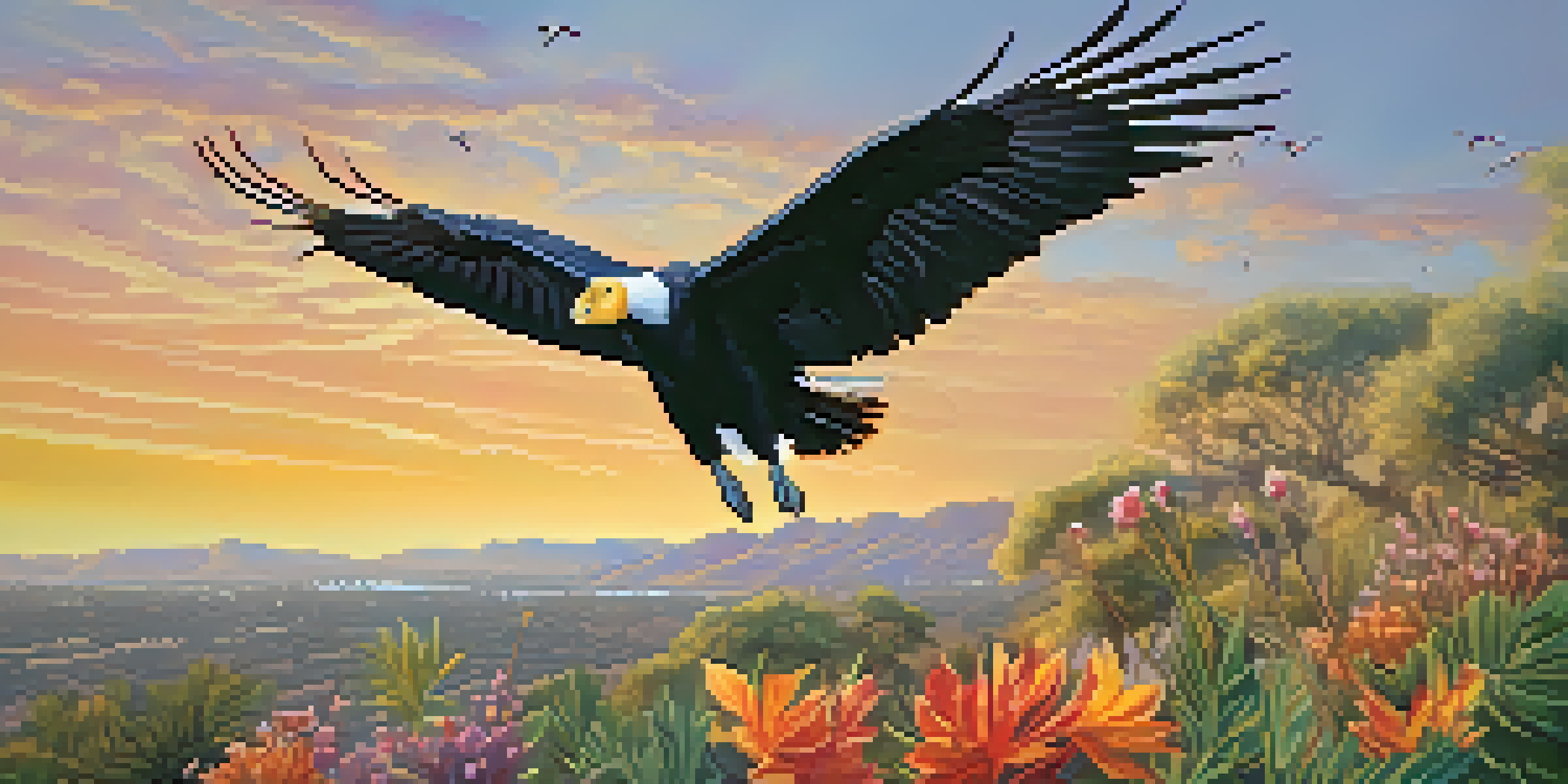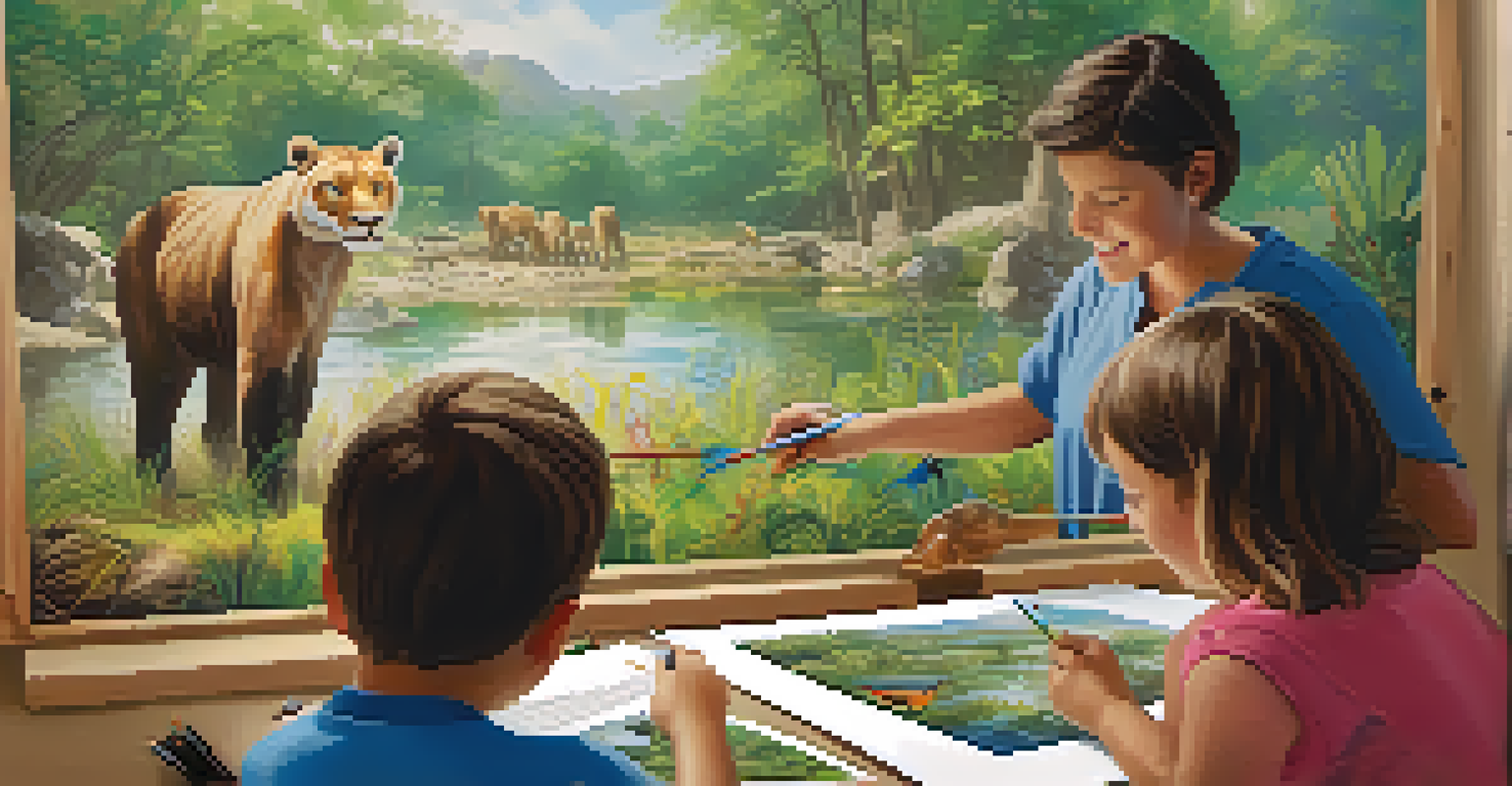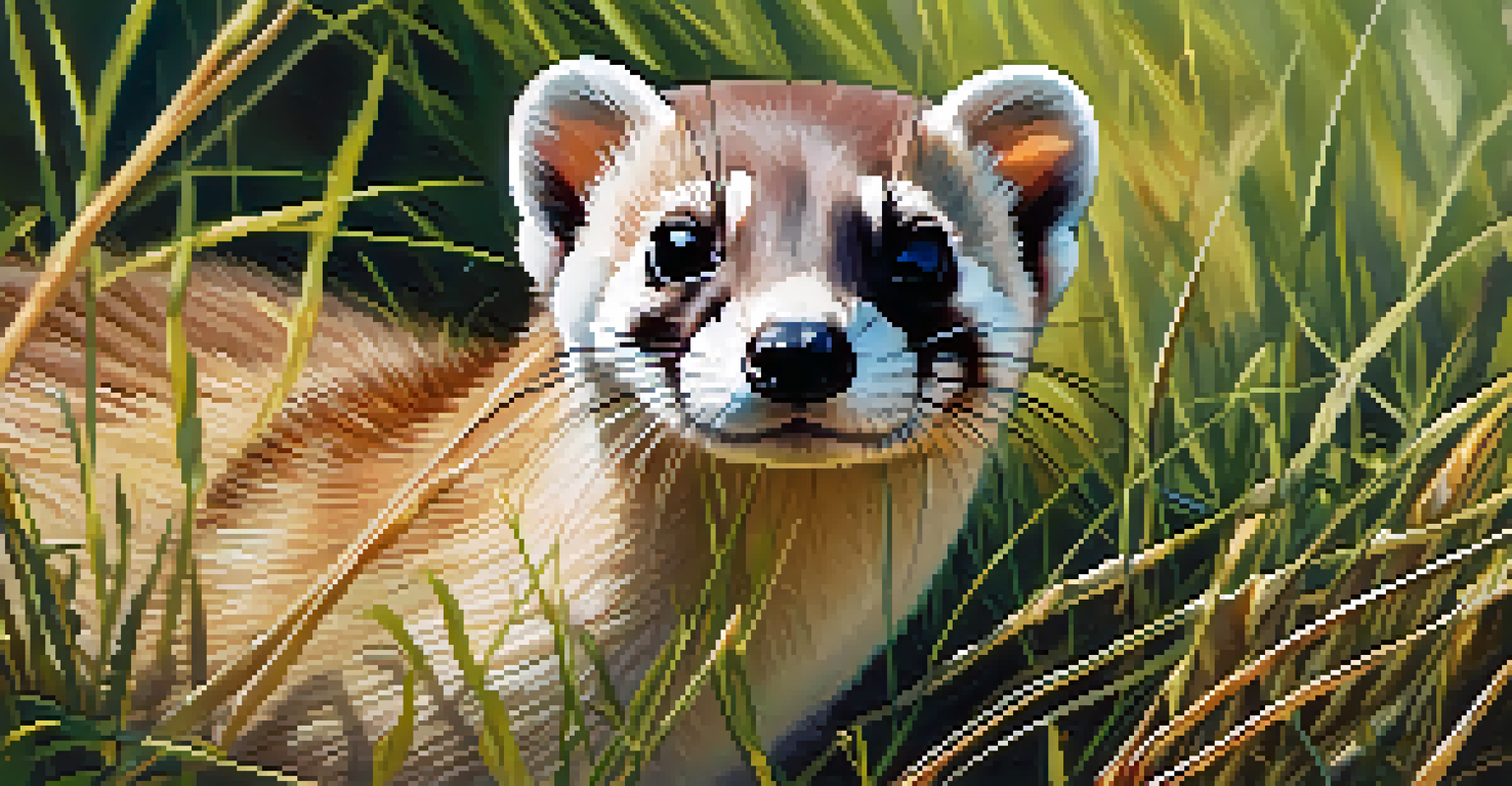How San Diego Wildlife Conservation Centers Protect Endangered Species

Introduction to San Diego Wildlife Conservation Centers
San Diego is home to several wildlife conservation centers dedicated to protecting endangered species. These organizations play a crucial role in preserving biodiversity, which is essential for a healthy planet. By focusing on both education and conservation efforts, they aim to raise awareness about the plight of endangered animals and the importance of their habitats.
In every walk with nature one receives far more than he seeks.
With a variety of programs tailored to specific species, these centers engage in breeding, rehabilitation, and research. They also foster partnerships with other organizations and communities to enhance their impact. The collaborative effort not only increases the chances of species survival but also promotes a sense of shared responsibility for wildlife conservation.
Visitors to these centers can witness firsthand the incredible work being done, often leading to a deeper understanding and appreciation of wildlife. This hands-on experience helps to inspire the next generation of conservationists and advocates for animal welfare. Ultimately, the centers strive to create a world where endangered species can thrive.
Breeding Programs for Endangered Species
One of the primary focuses of the conservation centers is their breeding programs, designed to increase the population of endangered species. These programs carefully select mating pairs to ensure genetic diversity, which is vital for the health of any population. By maintaining a genetically diverse gene pool, they can help prevent inbreeding and its associated health problems.

For example, the California condor, once on the brink of extinction, has benefited immensely from these breeding efforts. Through a combination of captive breeding and reintroduction into the wild, the population has steadily increased. This success story highlights the significance of targeted breeding programs in turning the tide for endangered species.
Conservation Centers Protect Biodiversity
San Diego's wildlife conservation centers focus on both education and hands-on efforts to protect endangered species and their habitats.
Moreover, these breeding programs often involve collaboration with other zoos and conservation organizations globally. By sharing knowledge, resources, and even animals, they create a network of support that strengthens their efforts. This collective approach not only maximizes the chances of success but also fosters a sense of global community dedicated to conservation.
Habitat Restoration Efforts
Protecting endangered species goes beyond breeding; habitat restoration is equally crucial. Many species face threats not just from poaching or disease but also from habitat destruction due to urban development, agriculture, and climate change. The conservation centers actively work to restore these critical habitats, ensuring that animals have a place to thrive.
The future will be shaped by the decisions we make today, not tomorrow.
Through initiatives like reforestation, wetland restoration, and invasive species management, these organizations aim to rehabilitate ecosystems. For instance, efforts to restore coastal wetlands in San Diego have provided essential breeding grounds for various bird species. Such projects not only benefit wildlife but also enhance the overall health of the environment.
Additionally, the centers educate the public on the importance of preserving natural habitats. By engaging local communities in restoration projects, they foster a sense of stewardship and responsibility for the land. This grassroots approach empowers individuals to make a difference, whether through volunteering or advocating for sustainable practices.
Research and Education Initiatives
Research is at the heart of wildlife conservation, and San Diego's centers are leading the way. By conducting studies on animal behavior, genetics, and ecology, they gather vital information that informs conservation strategies. This research not only aids in the recovery of endangered species but also contributes to the broader field of wildlife biology.
Furthermore, education is a key component of their mission. The centers offer programs for schools, community groups, and visitors, providing insights into the importance of biodiversity and conservation. These educational efforts help demystify wildlife issues and encourage active participation in conservation efforts.
Successful Breeding Programs
Targeted breeding initiatives have revived populations of endangered species, such as the California condor and black-footed ferret.
Through outreach programs, the centers also collaborate with local and international organizations to share knowledge and best practices. This exchange of information enhances global conservation efforts and fosters a united front against the challenges facing endangered species. By prioritizing research and education, these centers pave the way for a more informed and engaged society.
Community Involvement and Volunteer Opportunities
Community involvement is essential for the success of wildlife conservation efforts. San Diego Wildlife Conservation Centers actively seek volunteers to assist with various initiatives, from habitat restoration to educational programs. These opportunities not only provide hands-on experience but also allow individuals to contribute meaningfully to a cause they care about.
Volunteers often find themselves working side-by-side with conservation professionals, gaining invaluable insights into wildlife care and conservation practices. This experience can be transformative, fostering a deeper connection to the natural world and a commitment to protecting it. Many volunteers go on to become advocates for wildlife conservation, spreading awareness and inspiring others to take action.
In addition to volunteering, local communities can support the centers through donations or participation in fundraising events. These contributions play a vital role in sustaining conservation activities and expanding outreach efforts. By rallying together, community members can make a significant impact on the future of endangered species in San Diego and beyond.
Success Stories: Species on the Mend
The San Diego Wildlife Conservation Centers have numerous success stories that highlight the effectiveness of their conservation efforts. One remarkable example is the recovery of the Arabian oryx, which was once declared extinct in the wild. Through dedicated breeding and reintroduction efforts, these animals now roam freely in their native habitats once again.
Another compelling case is that of the black-footed ferret, which faced near extinction in the 1980s. Thanks to breeding programs and subsequent reintroduction into the wild, the population has rebounded significantly. These success stories serve as powerful reminders of what can be achieved when concerted efforts are made to protect endangered species.
Community Engagement is Key
Volunteers and local communities play a crucial role in supporting conservation efforts through hands-on involvement and fundraising.
Moreover, these successes inspire hope and motivate further conservation initiatives. They exemplify the potential for recovery when organizations, communities, and individuals come together for a common goal. By celebrating these victories, the centers encourage continued support for wildlife conservation, emphasizing that every effort counts.
The Future of Wildlife Conservation in San Diego
Looking ahead, the future of wildlife conservation in San Diego is promising yet challenging. As climate change and habitat loss continue to pose significant threats, the conservation centers are adapting their strategies to meet these evolving challenges. This proactive approach ensures that they remain at the forefront of conservation efforts.
Innovative technologies, such as genetic analysis and tracking systems, are being integrated into conservation practices. These advancements enhance understanding of species' needs and behaviors, allowing for more effective management strategies. By embracing new methodologies, the centers can continue to make strides in protecting endangered species.

Ultimately, the success of wildlife conservation relies on the collective effort of individuals, organizations, and communities. By fostering a culture of conservation and emphasizing the importance of biodiversity, San Diego can continue to be a beacon of hope for endangered species. Together, we can create a sustainable future where wildlife thrives.